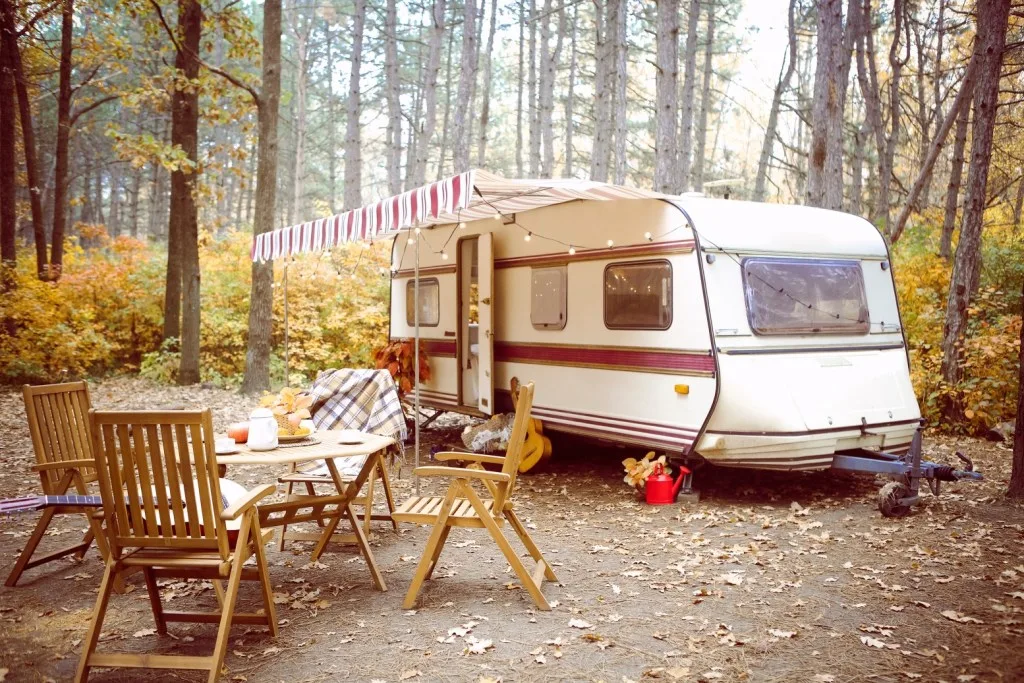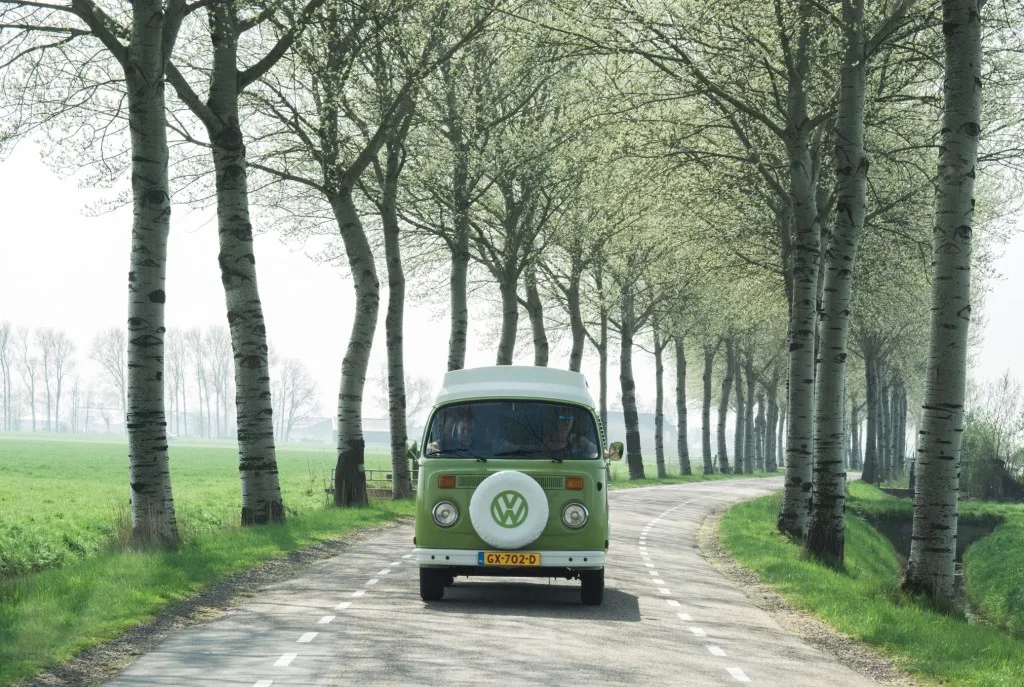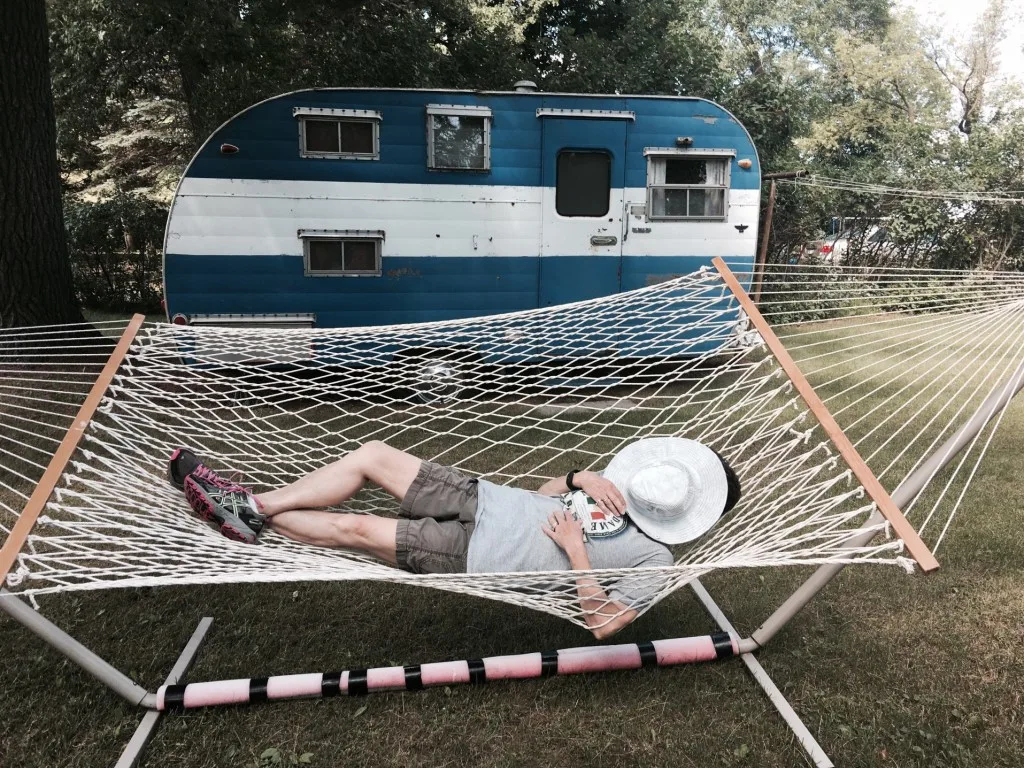5 Reasons to Avoid Vintage Campers
Scroll through Instagram long enough, and you’re likely to find beautifully redone vintage campers. They sure can lure you in with their charm and photogenic appeal.
But before you start dreaming of buying your own low-priced fixer-upper, take a look at the realities of renovating a vintage camper.
Let’s jump in!
What Is a Vintage Camper?
There’s a bit of a debate about what qualifies a camper to receive the title “vintage.” It can be a hot topic amongst those that consider themselves vintage camper enthusiasts.
The consensus is that a trailer must be between 20 and 100 years old to be vintage. That’s really the only requirement. You might picture a quaint camper from the 60s with bright colors and a retro-style refrigerator.
But a camper from the 90s is also considered vintage at this point.

5 Reasons to Avoid a Vintage Camper
If all social media pictures show happy campers enjoying their beautifully redone vintage campers, why should you hesitate? Unfortunately, not everything is always as it seems. Here are a few reasons you might consider avoiding a vintage camper.
1. They Almost Always Need a Total Overhaul
Unless you shell out a pretty penny to someone who has already completely renovated a vintage camper, they’re a lot of work. You’ll likely need to gut it. You may be dealing with water damage behind walls and in the flooring.
Even if you’re comfortable with big projects, it can get overwhelming.
2. They’re Expensive to Repair
While you may have gotten a deal on the purchase price, renovation expenses will add up fast. Even if you’ve done a thorough inspection before purchasing, there could be hidden problems. Unexpected mold or plumbing issues are prevalent in older units.
In short, overhauling a vintage camper will likely make you a frequent flier at your local home repair store.

3. Even Renovated, Some 10-Year-Rule RV Parks Will Deny You
Many RV parks have what’s called the “10-year-rule.” This rule states that they won’t accept guests that have an RV manufactured more than 10 years from the time of your stay.
This is often to avoid run-down eyesores junking up the feel of an RV park. So sometimes, they’ll let you make a reservation if you send in a photo of your RV and a manager approves.
Unfortunately, even your beautifully restored RV may encounter this rule. Some managers may dismiss you entirely regardless of the RV’s exterior. This may not matter if you plan to do a lot of boondocking or stay in state parks, but it could be an issue if you want to stay at popular RV parks.
Pro Tip: Worried your camper won’t pass the 10 year rule? Discover more about The RV 10 Year Rule | Why RVers Hate It and RV Park Owners Use It.
4. It’s Hard to Find Parts
Any time a product is no longer in production, parts are hard to find. It’ll take some shopping around to find the correct part. Not only will parts for your specific model be challenging to find, but if you do find them, you’ll pay a premium.
With today’s current supply chain issues, it can take even longer and cost even more for your parts to arrive.
5. They Attract a Lot of Attention
If you’re an extrovert, this part may not bother you. Your vintage camper is likely to capture the attention of those passing by. Understandably, people will be intrigued.
You’ll likely have fellow campers striking up a conversation with you regarding your renovation process and asking questions in general.
Don’t be surprised if onlookers ask if they can see inside your rig.

Vintage Campers Aren’t All Bad
Now that we’ve covered the bad, it wouldn’t be fair not to share the splendid side of having a vintage camper.
There’s a reason they’ve become so popular, and many people can look past the bad in their quest for a unique camper. Here are some positives to having your own vintage camper.
They’re Unique
You’re unlikely to come across a camper exactly like yours. Even if someone else has the same make and model, theirs will have different renovations.
Many RVs these days are like cookie-cutter subdivisions; they’re the same. Even across different manufacturers, you’ll find almost identical layouts and decor.
If you prefer one of a kind, vintage campers are a great choice.

You Have the Chance to Make It Your Own
Choosing a vintage camper makes it even easier to make it your own. While you can renovate a brand new camper, it can feel wasteful.
Because you’re completely renovating your vintage trailer, your personality has a chance to shine through. You can customize the layout and style as you wish.
You’ll Get a Lot of Attention
Remember how we listed getting a lot of attention as a negative? For some, this is a highlight! You’ve spent a lot of time, energy, and money on your vintage reno, and you should be proud of it.
Some campers love to share their home on wheels with others, even strangers. It’s a great conversation starter. If you love meeting new people and sharing your hard work, you may love the attention it brings.
Pro Tip: Still want to go vintage? We found 5 Vintage Camper Brands Worth Your Renovation Effort.
Is Owning a Vintage Camper Worth It?
While owning a vintage camper isn’t for everyone, it could be a great option for you. If you’re handy and don’t mind having a few surprises thrown your way, owning a vintage camper can be worth it. You might save money, and you’ll be helping to live out the motto, “reduce, reuse, and recycle.”
But those that just want to pull out of the dealer’s lot and head straight to the campground will likely feel like purchasing an older camper is worth it.
Does the idea of a vintage camper intrigue you, or do you feel they are simply too much work?
And, trust us, this is the vintage camper we restored from the ground up ⬇️
Discover the Best Free Camping Across the USA
To be honest with you, we hate paying for camping. There are so many free campsites in America (with complete privacy).
You should give it a try!
As a matter of fact, these free campsites are yours. Every time you pay federal taxes, you’re contributing to these lands.
Become a FREE CAMPING INSIDER and join the 100,000 campers who love to score the best site!
We’ll send you the 50 Best Free Campsites in the USA (one per state). Access the list by submitting your email below:
We renovated a 1965 18′ travel trailer. It took a year, and cost about $5k, which included a paint job. We gutted the entire thing, removing all interior walls and old insulation. We took the opportunity to rework the floorplan and added storage below the beds. It’s entirely electric: no propane, no water tanks, no batteries. Just plug into the generator, a friend’s house, or RV park. We love it because it’s so easy to grab and go. If you’ve got the place to work on it, along with time, we recommend renovating a vintage RV!
There’s a few points I would like to make about your “5 reasons to avoid” (a vintage camper) category…
1 – They almost always need a total overhaul
That is kinda a given… anyone considering this venture is pretty sure that a 40 year old trailer, even in great shape, outwardly, has 40 year old materials in it… But, like buying a house, your intention will be to renovate it.
2 – They are expensive to repair…
If you’ve decided to pursue a vintage camper… you’re probably not going to do repairs… More than likely, you are going to do replacements! You could renovate a medium size camper on a shoestring…
3. Even Renovated, Some 10-Year-Rule RV Parks Will Deny You…
Would you really want to stay in a snobbish campground like that…?
4. It’s Hard to Find Parts
Amazingly, modern parts (electric brakes, springs and everything to make a camper road worthy, will still fit a 1960 camper and they are not that expensive… (I just replace four wheels of electric brakes for $200!)
Finally…
5. They Attract a Lot of Attention…
LOL!!! I, for one, couldn’t imagine putting in a year’s worth of work, and not show it off… But, that’s just me…
Pretty much, I think, everyone who considers themselves “handy” or a DIY’r should take on a vintage camper project… It can really test your skills, but the rewards are great… (and if it doesn’t work out… hey, you haven’t lost a whole lot…